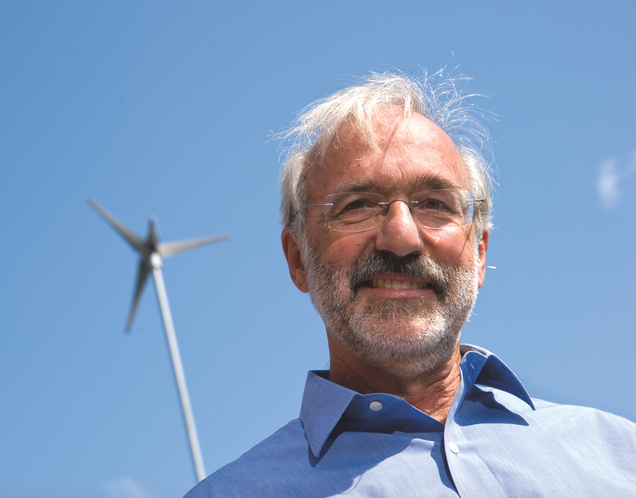Getting Power to the People
Caramanis Awarded Sloan Foundation Grant to Improve Electricity Distribution Networks
By Michael Seele
While the use of clean, renewable energy is rising nationally, its growth is being restrained by an imbalance between the consumption and generation of power. Wind and solar power are clean and cheap, but their availability varies widely depending on location, season and time of day. Fossil-fuel generated power is available anytime, but is expensive and carbon-intensive. Utility companies average out the cost difference and charge consumers accordingly, leaving little economic incentive for consumers to adapt to cost differences and increase the use of renewable sources.
Professor Michael Caramanis (ME, SE) is working to change that by developing algorithms that will enable consumers choose when and how they use electricity. Recognizing the potential of this approach, the Alfred P. Sloan Foundation has awarded Caramanis a $420,000 grant to pursue it.

“In a distribution network today, you pay an average price whether you consume in the morning or at night, on a hot or cold day, and regardless of the location of the grid that you are connected to,” said Caramanis. “This practice results in an electric power system that operates very inefficiently and provides perverse incentives for inefficient investments by all parties involved.”
Caramanis is developing algorithms that take a number of generation and usage factors into account and derive dynamic prices. Smartphone apps that incorporate these algorithms could enable users to take advantage of the emerging Internet of Things and pursue their preferences at the lowest cost or highest benefit.
“Knowing how electricity prices will change over time and in particular their locational granularity, will be very important information to consumers,” Caramanis added. “For example, in midday, prices are high in commercial areas but low in residential areas where everyone is away at work; the opposite trend is true in the evening. We want to empower the consumers by giving them information and financial incentives to do the right thing.”
Consumers might, for instance, specify when they expect to plug in electric vehicles to charging outlets and when they expect to depart. The consumer’s smartphone would then monitor the cost of electricity at that charger’s location and implement a charging schedule that takes advantage of low-cost times and avoids high-cost times. Using price information sharing, a smart thermostat might precool or preheat a suburban home and a grid-friendly dishwasher could be run at a time of day when electricity prices are low. Micro-generators could even be used to provide reserves.
Such usage would allow utilities to optimize their distribution networks, reducing their costs and allowing them to pass along savings to consumers. It would also facilitate more efficient use of solar and wind power, much of which is underutilized in the current system. Taken together, Caramanis believes his proposed dynamic price discovery and sharing market will contribute to lower energy costs and increased adoption of clean, renewable energy sources.
Caramanis and his research group have already conducted computer simulations that demonstrate the potential for significant benefits of optimal spatiotemporal electricity pricing. The Sloan Foundation grant will facilitate pilot studies using actual networks to evaluate the impact of spatiotemporal pricing, and Caramanis expects the results to boost confidence in the technology. A wide range of utilities, including National Grid, have expressed strong interest in participating.
“Building confidence is the key prerequisite to establishing a new market. Although we have already simulated benefits in computer studies, demonstrating bilateral benefits for utilities companies and consumers in actual pilot studies can provide invaluable momentum,” said Caramanis. “The Sloan Foundation grant will allow us to verify these benefits by key participating stakeholders including distribution companies, practitioners, regulators and consumer advocates. Should applicability and societal benefits be documented, barriers to the adoption of efficient distribution markets will have been significantly overcome.”